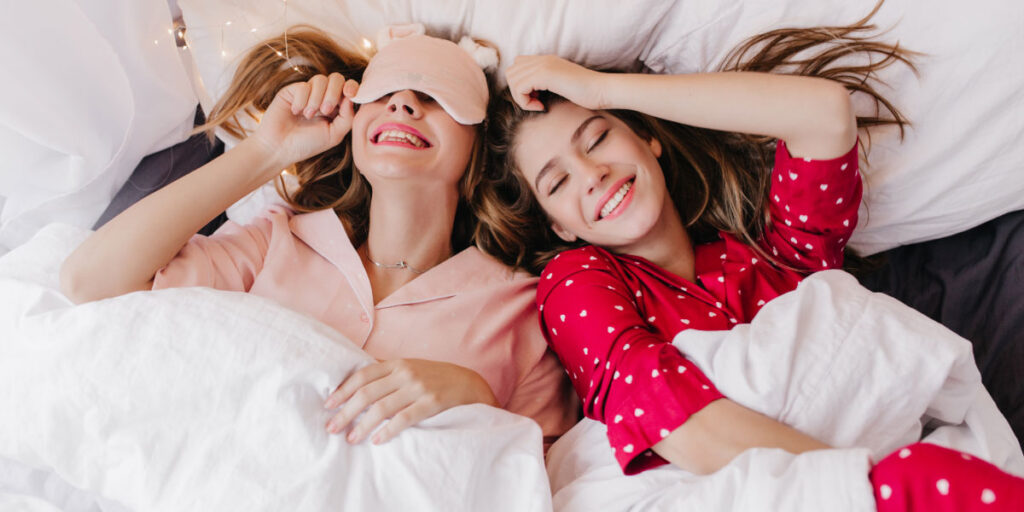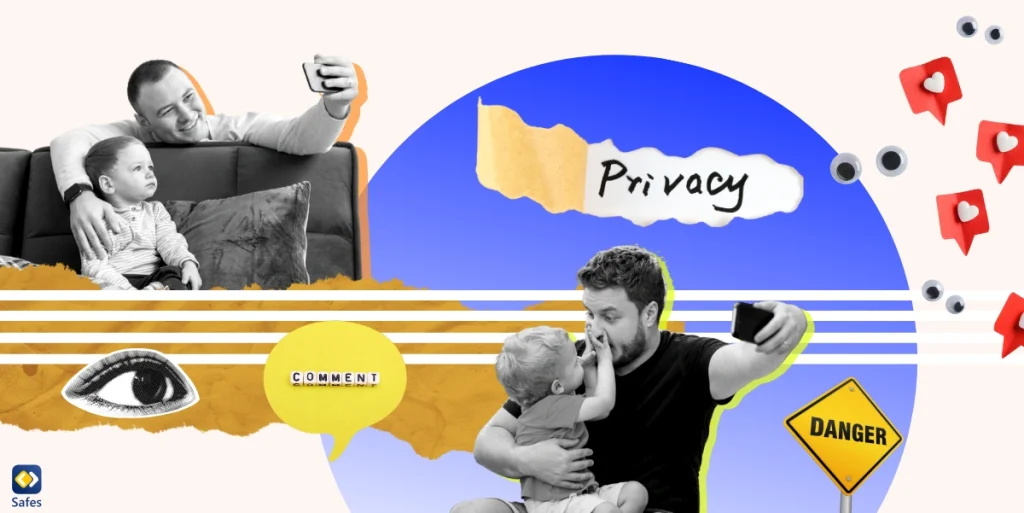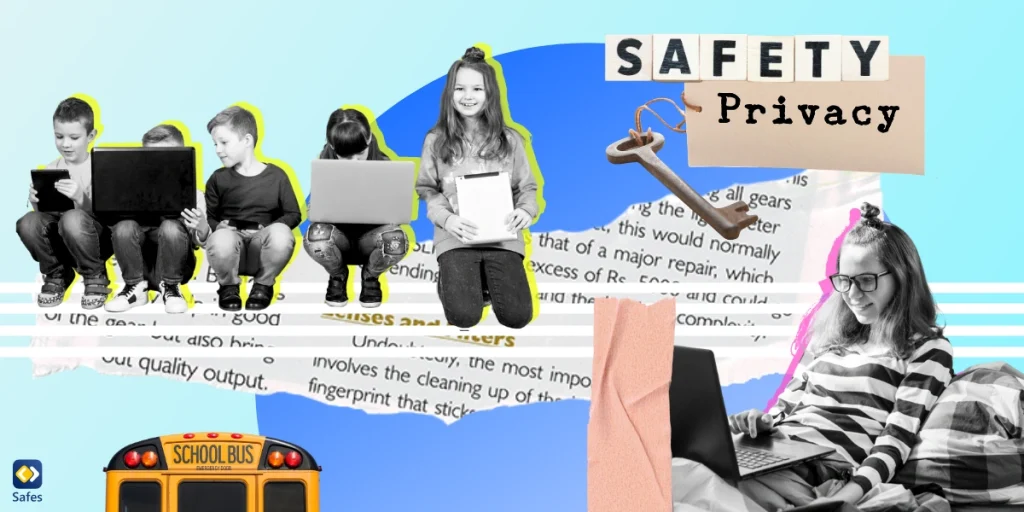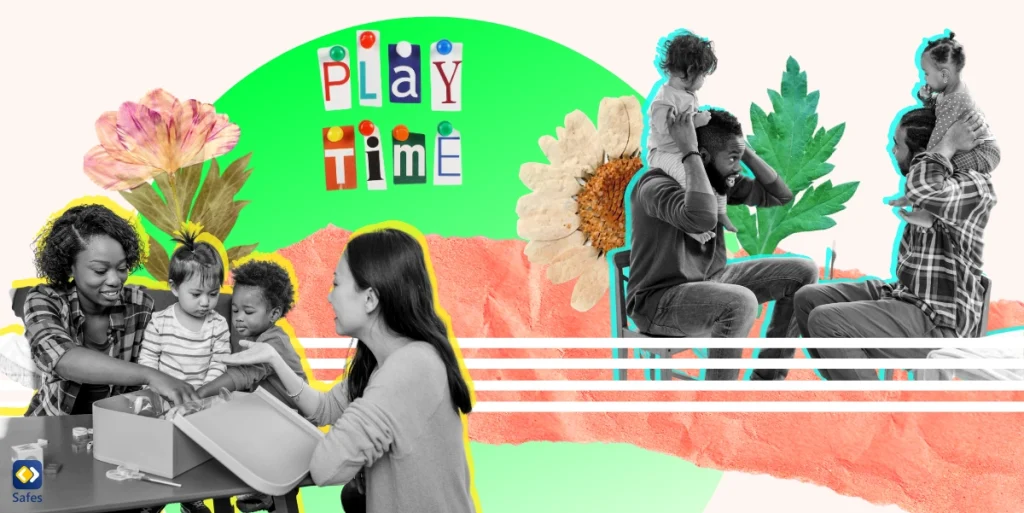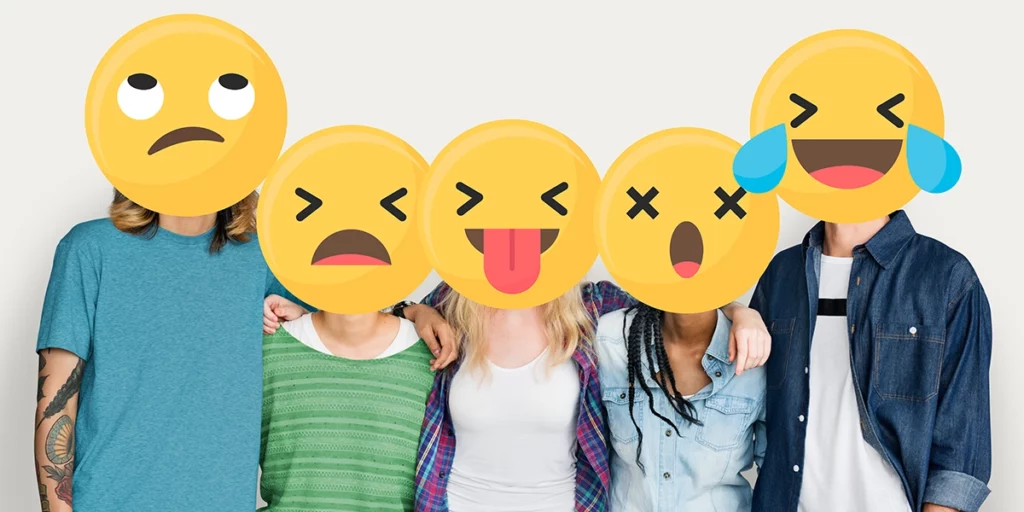According to the American Academy of Pediatrics and the American Academy of Sleep Medicine not getting enough sleep can result in a higher risk of obesity, diabetes, injuries, poor mental health, and problems with attention and behavior. You might be wondering: Is my teenager getting enough sleep? The American Academy of Sleep Medicine (AASM) has recommended that 6- to 12-year-old children get 9 to 12 hours of sleep, while 13- to 18-year-old teenagers should get 8 to 10 hours of sleep per day. So now you can determine whether your kid gets enough sleep. In case they don’t, we’ve collected the best sleep aids for your teenager in this article.
Download and Start Your Free Trial of the Safes Parental Control App
Causes of Not Being Able to Sleep
According to KidsHealth, many teens have trouble naturally falling asleep early because their brains work on later schedules. Teens body’s internal sleep clock is programmed to sleep later at night and wake up later in the morning. This shift occurs because teen brains produce the sleep hormone melatonin later in the evening compared to children and adults. As a result, teens have a more difficult time falling asleep. This delay in the sleep-wake cycle can sometimes be so severe that it interferes with teens’ daily activities. In those cases, the condition is known as delayed sleep phase syndrome or “night owl” syndrome.
This isn’t the only reason teens don’t sleep. Bright and blue light from electronic devices also delays melatonin release, making it even more difficult to sleep.
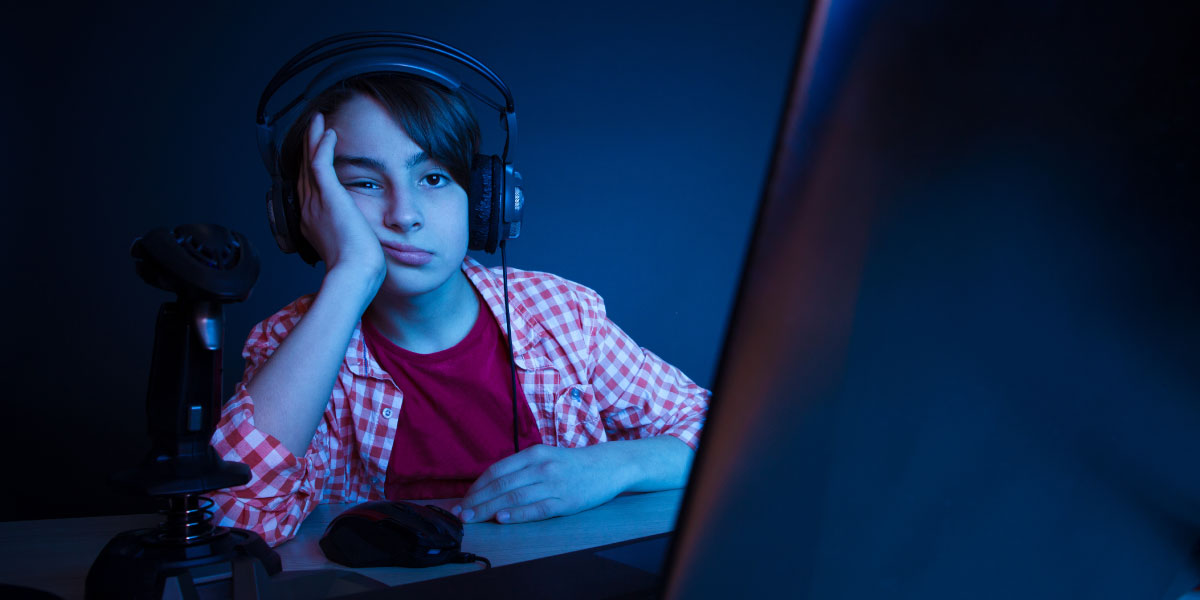
We all have trouble falling asleep every now and then. However, if you or your teen experience insomnia several nights per week for several weeks or months, you should consult a doctor. To sum it up, many people suffer from insomnia, or difficulty falling or staying asleep. A variety of factors can make it difficult to sleep, including:
- Uncomfortable sleeping environment
- Feeling sick
- Stress or anxiety
- Mental health problems
- Medical problems
- Some medications
- Poor sleeping habits
Teen Sleep Problems
Apart from insomnia, KidsHealth also names other sleep problems that teens can suffer from.
Periodic Limb Movement Disorder or Restless Legs Syndrome
These disorders can cause teens to have difficulty falling asleep and to be restless during the night. During the day, they can be tired and cranky, and they may have attention or behavioral issues. Some teenagers may have both disorders.
Periodic Limb Movement disorder (PLMD)
Teens with this disorder can have leg and arm twitches or jerks at night. The cause of PLMD seems to be unknown. However, according to Cleveland Clinic, a low iron level or problems with limb nerve conduction caused by diabetes or kidney disease may be associated with PLMD.
Restless Leg Syndrome (RLS)
This disorder causes the urge to move one’s legs. This happens mostly at night. Teens possibly feel tingling, itching, cramping, or burning. The National Institute of Neurological Disorders and Stroke noted that the cause of RLS is mostly unknown. However, evidence indicates that low levels of iron in the brain can be responsible for RLS. Also worth mentioning is that RLS is related to a dysfunction in the part of the brain that produces dopamine, the “feel-good” hormone.
Obstructive Sleep Apnea (OSA)
Obstructive sleep apnea occurs when a person briefly stops breathing while sleeping. Someone who has it may snore, breathe loudly, toss and turn, and sweat profusely at night. Because they do not get enough restful sleep, they are usually sleepy during the day and may fall asleep in class or take naps.
OSA happens when something blocks the airway during sleep. Overweight people are also more likely to have apnea. Eventually, it can cause learning, attention, behavior, and heart problems if not treated.
Nightmares
Most teenagers have nightmares from time to time. Nightmares can wake you up in the middle of the night and make it difficult to fall back asleep. Stress and anxiety are the most common causes of frequent nightmares. Other things that can set them off include illness, certain medications, the use of drugs or alcohol, and a lack of sleep.
Sleepwalking
Most sleepwalkers are children, but it happens to some teens and adults as well. Sleepwalking frequently occurs when a person is ill, has a fever, is not getting enough sleep, or is under stress.
Sleepwalking is usually not a serious issue. Sleepwalkers usually return to bed on their own and have no memory of their sleepwalking. Avoid waking sleepwalkers as this may startle them. Instead, gently return them to their beds.
Narcolepsy
Although narcolepsy is uncommon, symptoms frequently appear during childhood and teenage years. During the day, people with narcolepsy are extremely sleepy. They may become drowsy or fall asleep unexpectedly. They may lose muscle control or have vivid dreams while sleeping or waking up. They have difficulty sleeping and frequently wake up at night. Narcolepsy can be dangerous if someone experiences a sleep attack while performing a task such as driving.
Safe Sleep Aids for Teens
First off, according to Choosing Wisely, an initiative of the ABIM (American Board of Internal Medicine) Foundation, sleep medications aren’t made for children. Use this as a disclaimer in case you still want to use sleeping medication for your kid. A better choice to get your kid to sleep is sleeping tips. One reliable source that offers sleeping tips for teenagers is the Better Health Channel. Here we’ve gathered some of the best sleeping tips we’ve found on this source as well as others online.
Best Over the Counter Sleeping Aid
In the U.S. there are no approved prescription drugs to treat childhood insomnia. However, some children are given antihistamines. Keep in mind that your doctor has to change the adult dose to fit your teen’s weight. If your child’s doctor recommends a drug, remember to ask about the side effects and risks and if it will really help your child’s sleep problem or if it will only mask the possible underlying issue.
Some examples of over-the-counter (OTC) sleep aids are:
- Diphenhydramine: This antihistamine is an active ingredient in allergy medications. Primarily it isn’t used as a sleep drug, but it promotes sleep as a side effect.
- Doxylamine succinate: This antihistamine is the active ingredient in sleep aid pills and Nyquil. This OTC medicine causes drowsiness.
Another commonly used sleeping aid is melatonin. Melatonin is a naturally produced hormone in the brain. Melatonin is classified as a dietary supplement by the Food and Drug Administration (FDA) and is not subject to the same strict regulations as other types of medication. There has been little research on melatonin as a sleeping medicine for teenagers. And the long-term risks are still unknown.

Best Natural Sleeping Aid
Generally, natural sleeping aids are considered safer for teens than OTC or prescribed medication. Let me show you some natural sleeping aids.
Valerian Root
Valerian root is mostly used as a natural treatment for symptoms of anxiety and depression. In the U.S. and Europe, valerian root is one of the most common sleep-promoting herbal supplements. However, study results remain inconsistent.
Magnesium
Magnesium is a mineral that is involved in hundreds of processes in the human body, including brain function and heart health. Furthermore, magnesium may help to calm the mind and body, making it easier to sleep. According to research, magnesium’s relaxing effect may be partly due to its ability to regulate melatonin production. Magnesium is known for its ability to relax muscles and induce sleep. According to a study, low magnesium levels in the body may be linked to sleep problems and insomnia.
Lavender
The soothing scent of lavender is thought to improve sleep. Studies suggest that smelling lavender oil shortly before bedtime may be sufficient to improve sleep quality in people suffering from mild insomnia.
Passionflower
A popular remedy for insomnia is passionflower, also known as maypop or Passiflora incarnata. Animal studies show that passionflower has sleep-promoting properties. Its effects in humans, however, appear to be dependent on the form consumed.
Glycine
Glycine is an essential amino acid for the nervous system. According to research, it may also help with sleep. It’s unclear how this works, but glycine is believed to work by lowering body temperature at bedtime, signaling that it’s time to sleep.
Conclusion
Try incorporating good sleep practices into your teen’s routine before giving them any medications, such as keeping electronics out of their bedroom or shutting off the internet at night for better sleep. Since a poor sleep schedule is not the only downside an electronic device can cause, consider learning more about the negative effects of the internet on child development and the consequences of inappropriate internet use.
One way to prevent these negative consequences is by downloading a parental controls app, like Safes. Safes aims to make the digital world safer for children. Safes features include, but are not limited to:
- Screen time schedule: This feature protects children from sleep disorders, excessive and harmful screen time, and distractions.
- Application blocking: The child’s access gets denied on specific applications based on the parents’ choice. Parents can update their selections at any time.
- Detailed activity report: Parents get informed about their child’s device and internet usage patterns and the content they consume. It covers multiple bases, including screen time, app and social media usage.
Ready to safeguard your child’s online experience and promote healthier sleep habits? Start your free trial of Safes today.
Keep in mind that the supplements mentioned above are one way to increase the probability of a good night’s sleep, but they’re likely most effective when combined with good sleep practices and habits. If you decide to try any of these sleeping medicine for your teenager, please consider consulting a doctor.
Your Child’s Online Safety Starts Here
Every parent today needs a solution to manage screen time and keep their child safe online.
Without the right tools, digital risks and excessive screen time can impact children's well-being. Safes helps parents set healthy boundaries, monitor activity, and protect kids from online dangers—all with an easy-to-use app.
Take control of your child’s digital world. Learn more about Safes or download the app to start your free trial today!
